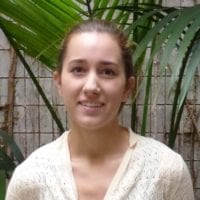
Transcriptome analysis of resistance genes in the genus Glycine
The genus Glycine contains two subgenera. The subgenus Soja includes the major crop species Glycine max or soybean. The other subgenus, Glycine, includes wild diploid and tetraploid perennial species. Because the subgenus Glycine includes polyploid species and their diploid progenitors, it is an ideal system for studying the effects of whole genome duplication (WGD) on plant genomes. Using transcriptome data from seven Glycine species, including polyploid species and their diploid progenitors, we have analyzed the number of different R-genes, specifically NBS-LRR genes, expressed in each species to determine how the polyploid genome has evolved as a result of containing twice as many R-genes as their diploid progenitors. R-genes are a broad category of genes within plants that are involved in plant defense against various pests and pathogens. NBS-LRR (nucleotide binding site leucine rich repeat) genes are a large family of R-genes that are known to be involved in the detection of a wide array of pathogens, including bacteria, viruses, fungi, and insects. Our results indicate that some polyploid species preferentially express NBS-LRR genes from one diploid progenitor and that polyploid species do not necessarily express more NBS-LRR genes than their diploid progenitor species. Further findings from this study will show us specific patterns of gene expression loss and gains in the polyploid species. This study will enhance our knowledge of the evolution of resistance genes in perennial Glycine species, which may be used as a resource to enhance soybean’s resistance to diseases and pests.
My Experience
This summer was one of the best research experiences I have had since I began working in a lab four years ago. My PI, Dr. Doyle, and mentors, Sue and Aure, gave me direction and help on my project whenever I needed it. Because of them I have gained important insight into how a successful project can be planned and executed. I enjoyed the independence I was given with my project, which I think allowed me to become a better researcher. I got the opportunity to learn many new skills that will undoubtedly help me in future research projects. I also received very helpful guidance and advice about choosing graduate schools to apply to and the application process. Every member of the Doyle lab was extremely kind and helpful. Outside of lab I found Ithaca to be a great place to spend the summer, especially with my fellow interns.
